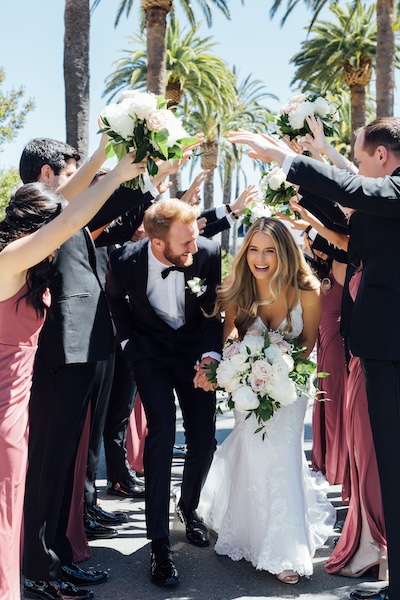Business + Marketing
Branding has become a buzzword that no business owner can ignore, especially in 2019. While there is so much advice available and trends to follow, I would challenge every photographer to focus on the timeless ways they can elevate their own brand. Classic, honest and professional will always endure and ensure your business aesthetic isn’t out of date year after year. It will help you build trust with a loyal audience and push your reputation as a leader in your industry.
Let’s dive into some common pitfalls to avoid, as well as helpful tips to assist you in marketing your business.
1. Focusing Too Heavily On Your Personal Style
As a photographer, your personal style is important when it comes to communicating through your work and interacting with clients, but your personal taste, in most cases, is not relevant to attracting your ideal client with your brand identity. We often rely on using visual elements in our brands because, as creatives, it’s what we know and it comes easily to us. But when you think about branding your business, think about the visuals your client would want to see. Your brand should be a blend of your photography style and your audience.
Let’s say, for example, that your work is light, fresh and modern, and your clients are too—that’s why they’re attracted to your style, after all. However, you are an old soul who loves art-deco design and you’ve always loved retro-style fonts. It would be a mistake to assume that your ideal audience would be drawn to this style as well. Focus on light, fresh and modern fonts that would reflect your work and your clients’ preferred aesthetic. In this case, a sleek sans-serif font in a fine-character weight would be a more effective choice to communicate and relate.
2. Using Cookie-Cutter Website Templates
We all know that one template that has been circled around the industry more times than we can count. Your website is your biggest sales tool, so why treat it like a secondhand store? If your potential customers are forced to view the same website foundation over and over again, your work will get lost and so will your brand.
If you must use a template for your website, hire a designer and developer to customize it for you. Make sure to use unique fonts and colors that are part of your branding, and have them add little touches like secondary logos, watermarks or graphics so it’s styled in a custom way. With this approach, there will be some definition between another brand that is using the same template.
3. Not Defining Your Logo From Competitors
Is your logo distinct from other photographers in your field? Is it a watercolor calligraphy logo or a geometric stencil of a camera? Am I getting some head nods? Align the aesthetics of your logo with something that is different, stands out and is timeless. When a client is searching for the perfect fit for their event, they need to remember your logo because more than likely, they won’t remember the name of your business after they’ve clicked off your page. Invest in creating an unmistakable logo.
When you begin to explore how to start developing your logo design, start with research. Screenshot all your direct competitors’ sites and note any similarities. You’ll want to stay away from anything you see as a common element—using a square box around the logo, a similar scripted font, grey logos, the same general layout. Once you’re able to recognize these elements, separate yours so it stands out. You can also pull inspiration from brands that your ideal client would buy from. Note any common details. Think about the mood, layout and design elements of that brand. Is there anything shown in those details that would align with your brand’s style?
We recently worked with an award-winning photographer who wanted to rebrand from a generic name to his own. As part of the exploration process, we took a look at his competitors and then also dived deeply into the clients they wanted to work with. Through this, we discovered that their clients were in creative industries (fashion, design, creative direction), had a love of architecture and traveled extensively. When we focused even more, this client read Architectural Digest, Vogue and had a love of boutique hotels around the world. This was used as the guiding direction as we began to develop their logo and brand identity: editorial-style fonts, tailored-yet-personable icon designs and a clean aesthetic. Inspired by their ideal clients’ likes, we still remained true to the photographer’s editorial, fine-art style seen in their work.
4. Hiding Behind Your Brand
People want to know who they’re working with. After all, choosing a photographer is a deeply personal experience. Get in front of your brand and make sure you have a great headshot obviously showcased on your website. For your headshot, a combination of two throughout your site always lends itself to be more approachable—a more traditional one with you facing the camera in a relaxed setting or informal background. Whether it’s an office space or outside, a friendly smile and neutral palette will stand the test of time. Another place to show up more is on your Instagram account to develop a connection with your audience before they have even met or spoken with you. When they reach out, they’ll already feel like they know you and they will feel confidence in their decision.
5. Writing Your Own Copy
Your brand is not just about the visuals; it’s also in how you connect through language. I’ve met very few business owners that can write meaningful, effective and personable copy. Invest in the words behind all your communication, from your website to your pricing guides, by hiring a wordsmith. This is also the perfect place to bring in a bit of your personality. Be cheeky or bold or professional, but always keep your audience in mind. A conversational style will always win the hearts of potential clients and encourage action to connect over bland content that they’ve read on every other website.
6. Ignoring How You’re Being Perceived
When we get busy in our business doing the work and consistently booking clients, it’s so easy to forget how others are judging your brand’s aesthetic online. The word “judge” is rather harsh but it’s honest, and it’s exactly what people do when they are looking to hire a vendor. Would you hire yourself for the amount you’re charging based on perception alone? Very few businesses can get away with a dated brand and lackluster website. Make sure your brand and website is reflecting your future and not your past. A current portfolio, up-to-date blog and a clean design will not only allow you to look like a true pro, but it will also communicate to potential clients that you’re actually still working. Yes, I’m talking to you over there—the one who hasn’t posted to their blog since 2017 and is still rocking weddings in your portfolio when turquoise was Pantone’s color of the year. Stay relevant regardless of how busy and well-known you are!
7. Neglecting Your Client Experience
What Jeff Bezos once said is true: “Your brand is what other people say about you when you’re not in the room.” Everything a potential client or existing client touches with your brand should be well-thought out. Canned responses that feel impersonal and how you present your finished work are all aspects of your branding that need attention. Brand touch-points like customized email responses, welcome notes and expertly packaged presentations can take your business from mediocre to remarkable. When you have a remarkable client experience, those clients will share how you made them feel. A brand that takes care of their clients, offers excellent customer service and gives clients experiences that they never expected will always get talked about. And when someone they know asks who photographed their event, they will give you a glowing recommendation.
We recently had a client that was delivering a beautiful product but wasn’t seeing many referrals from past clients. And that was because they were simply doing what they said they would do. There was nothing above and beyond that was unexpected. For this client, we made a timeline of every time a client “touched” their brand and crafted an experience that impressed at each stage. A notable piece that completely changed their referrals was gifting an inspirational print for each of the bridesmaids on the day of the wedding. It was a small token that was not only noticed from the bride for pampering her party but left a tangible piece that was remembered by each member. That small detail increased their referrals wedding after wedding.
8. Not Outsourcing Business Management
Not every creative is great at managing his or her own brand, and that’s fine. Last year, we got to know The Wedding Artists Co (who originally reached out to us to rebrand their business), and they offered services that I was beyond impressed with: representing top photographers in the wedding industry and handling all of their administration, client leads, contracts, schedule and communication, without compromising the photographers’ personal connection to their couples. It was a service I didn’t know existed but realized could help so many photographers out there. It allowed the artists they worked for to focus on their craft while having an expertly run business. This, in turn, elevated their photographers’ brands, assisted in booking dream clients and gave them an experience they weren’t capable of getting otherwise. It’s OK to hire out help and think of new ways of doing business.
Whether you have flagged one or all of these common pitfalls, don’t feel overwhelmed or alone in the path of your business. There is no right way to get to the top or proven method that works for everyone. Each season brings new challenges, new clients and new channels to perfect.
This advice is not meant to force every photographer to go out and rebrand their business but rather think deeper about the overall aspects of your brand and push to make lasting changes that will help you feel confident about your business. Without a doubt, a lot of these pitfalls can be worked on over time or tackled one by one.
Once you reach a certain level of success, it’s essential to hire out professionals to help you with everything from branding, website design, copywriting to public relations. They will view your brand from the outside and give you a perspective that’s hard to see through your eyes.
Ashley Malone is the creative director of Ashley & Malone, a boutique branding and design agency that she runs with her husband, Dallas. They have a sweet spot for wedding, interior design and lifestyle brands.
Related: 10 Ways to Improve How Potential Clients See Your Photo Business
6 Things to Ask Yourself if You Need Help Breaking Out of a Photography Mold
Six-Figure Wedding Photography: Making Your Website a True Reflection of Your Brand’s Spirit
Prep Your Photo Business With These Social Media Trends in 2019





